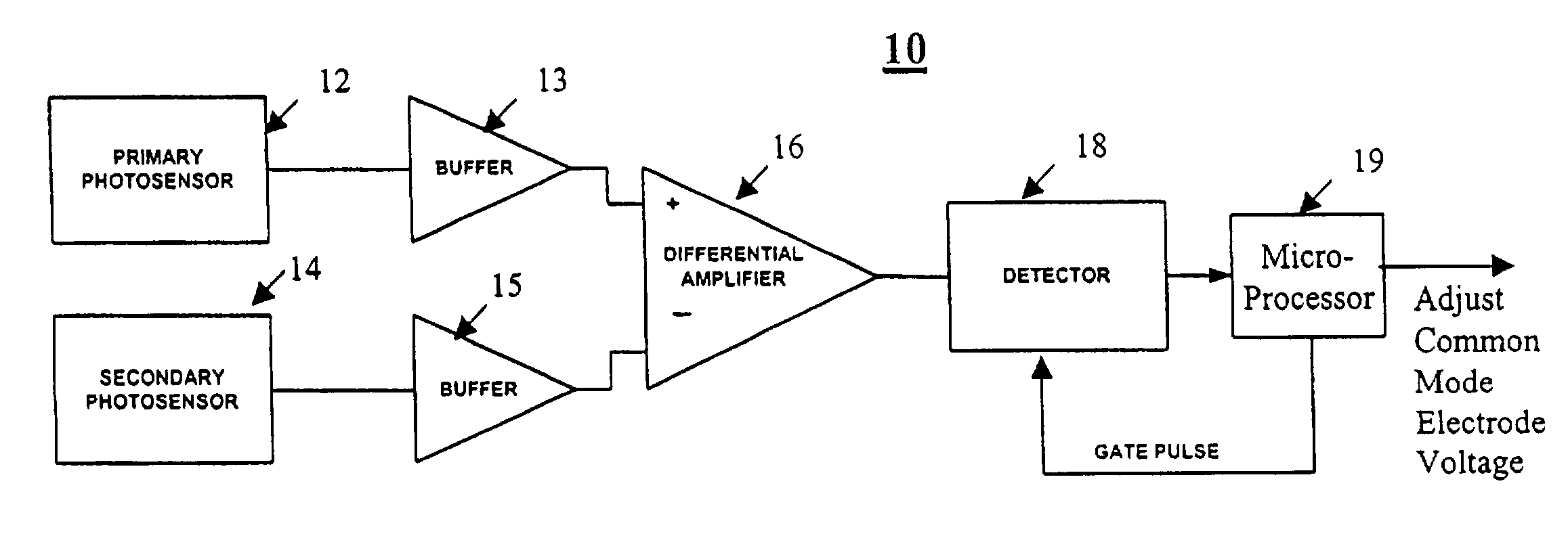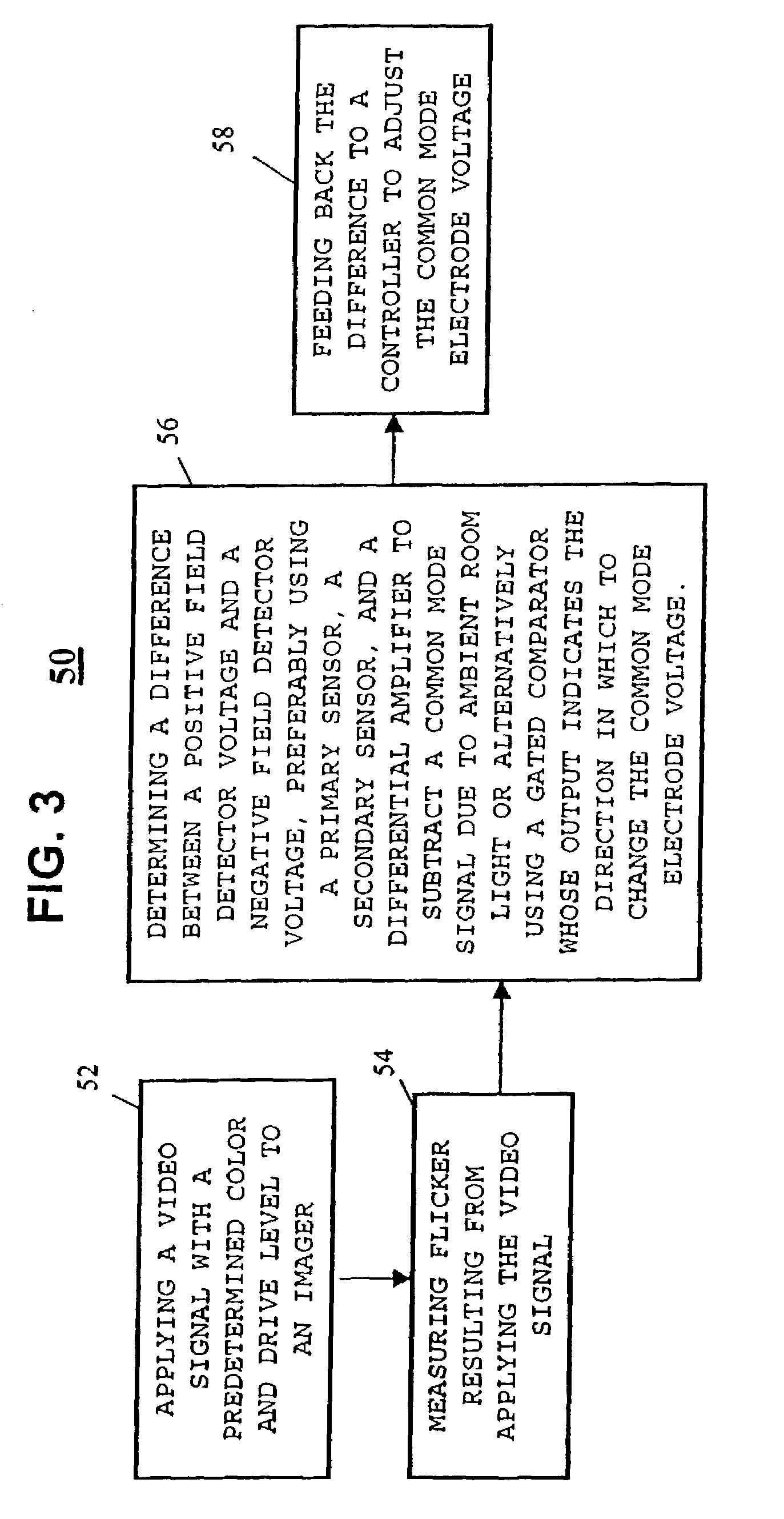Method and apparatus for controlling common mode electrode voltage in LCOS/LCD
a common mode electrode and voltage control technology, applied in the field of lcos/lcd video projection systems, can solve the problems of affecting the device lifetime, affecting the ability of lcos/lcd to adjust the common mode electrode voltage, and drifting with time and temperature, so as to prevent the possibility of damage to the imager on initial power-up and minimize image sticking
- Summary
- Abstract
- Description
- Claims
- Application Information
AI Technical Summary
Benefits of technology
Problems solved by technology
Method used
Image
Examples
Embodiment Construction
[0014]A block diagram of a presently preferred embodiment is shown in FIG. 1. This embodiment 10 uses two sensors, denoted as a primary sensor 12 and a secondary sensor 14, in order to avoid the problems of rejection of ambient light. The differential sensing between the two sensors will subtract out the common-mode signal due to ambient room light. The two sensors can be placed a short distance apart (e.g., 1–2 inches) in the overscan area of the picture. Alternately, the sensors can be placed at other locations in the light path, including under the fold mirrors that typically are found in a television cabinet in the case of systems without overscan. Pinholes, either intentional or naturally occurring, would allow sufficient light to reach the detectors. The differential sensing between the sensors 12 and 14 is preferably achieved by taking the respective outputs of the sensors and buffering them though respective buffers 13 and 15 and using the buffered outputs as inputs to a dif...
PUM
| Property | Measurement | Unit |
|---|---|---|
| distance | aaaaa | aaaaa |
| voltage | aaaaa | aaaaa |
| area | aaaaa | aaaaa |
Abstract
Description
Claims
Application Information
 Login to View More
Login to View More - R&D
- Intellectual Property
- Life Sciences
- Materials
- Tech Scout
- Unparalleled Data Quality
- Higher Quality Content
- 60% Fewer Hallucinations
Browse by: Latest US Patents, China's latest patents, Technical Efficacy Thesaurus, Application Domain, Technology Topic, Popular Technical Reports.
© 2025 PatSnap. All rights reserved.Legal|Privacy policy|Modern Slavery Act Transparency Statement|Sitemap|About US| Contact US: help@patsnap.com



